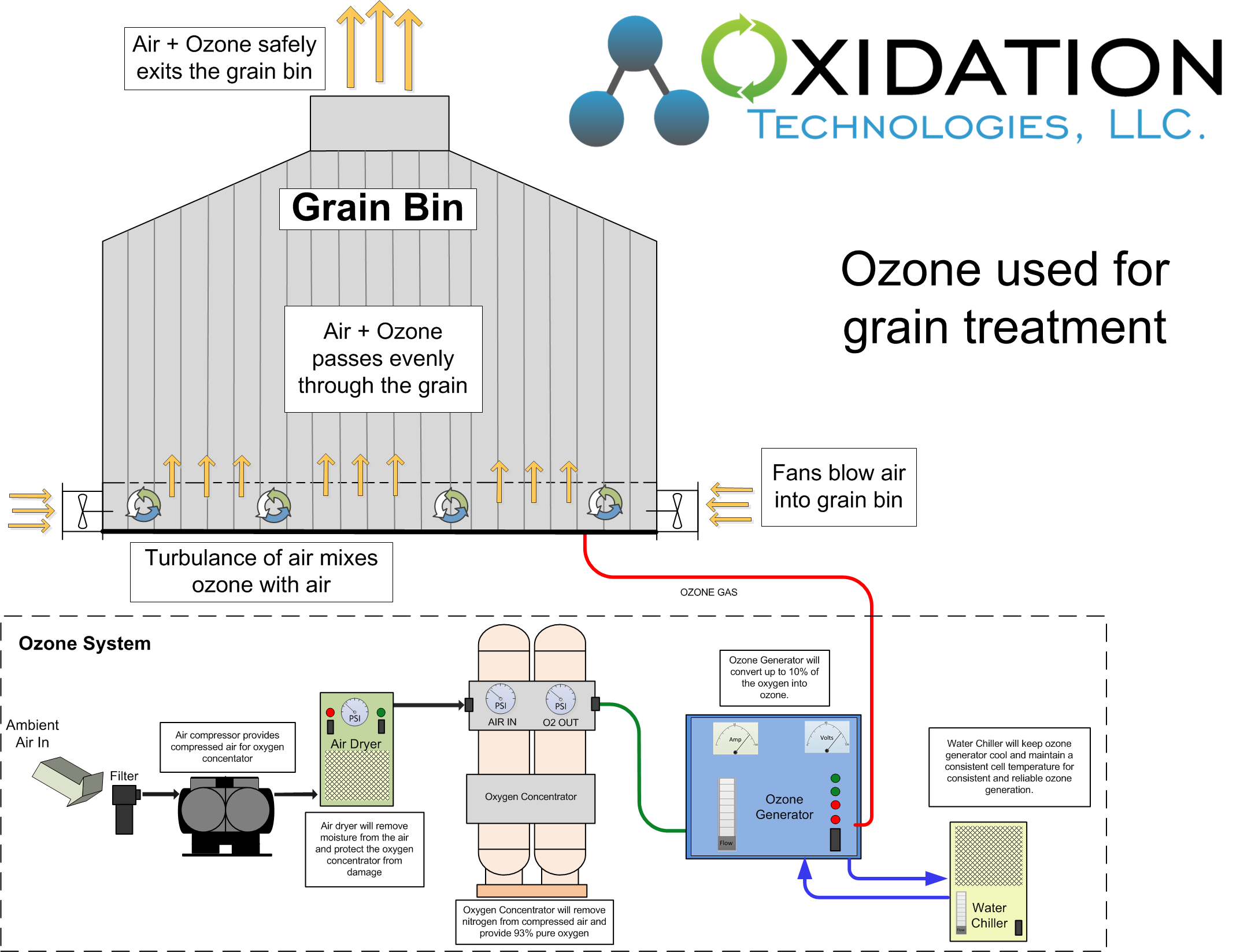Mycotoxin Reduction in Grain
Aflatoxin is a mycotoxin created by a specific mold that can grow in the field prior to harvesting crops, most commonly we see this occurring in corn during wet years. High levels of aflatoxin in grain are not allowed for human consumption or use in some animal feeds. This can dramatically lower the value of your crop, especially if that crop is corn, as most corn is used for consumption by humans or animals.
Ozone has the ability to oxidize and break down aflatoxin in grains. Due to the fact that aflatoxin is a result of mold that is most likely not present anymore in your grain, when the aflatoxin levels are reduced to acceptable levels they will stay at those levels and not rebound. While it is challenging to eliminate 100% of the aflatoxin in grains, reducing the level to normal, and safe levels is very reasonable.
Additional research has been promising on the reduction of other mycotoxins including vomitoxin and deoxynivalenol in various grains.
Ozone gas is produced via an ozone generation system. This ozone gas is pumped into the grain bin and diluted with existing air flow to treat the grain. Ozone treatment may be necessary over the course of days or even weeks depending upon your specific application. Ozone equipment is available in trailers that can be set near the grain bin for the duration of the required ozone treatment.
Ozone monitors can measure, and verify ozone levels leaving the grain bin to ensure ozone gas has passed through the entire grain bin and a residual of ozone is present. This will verify operation of the system.
For research and details on ozone use for Mycotoxin reduction follow links below to research articles:
-Ozone used to reduce fungus and aflatoxin in peanuts-Ozone removes aflatoxin in red pepper-Ozone used for reduction of aflatoxin in corn-Review of ozone used in grain preservation-Ozone gas used as an anti-aflatoxin in wheat-Effect of ozone treatment on deoxynivalenol and wheat quality-Saturated aqueous ozone degradation of deoxynivalenol in grains-Effect of ozone treatment on the safety and quality of malting barley For questions on how to implement ozone into your application, please call our ozone application experts.










